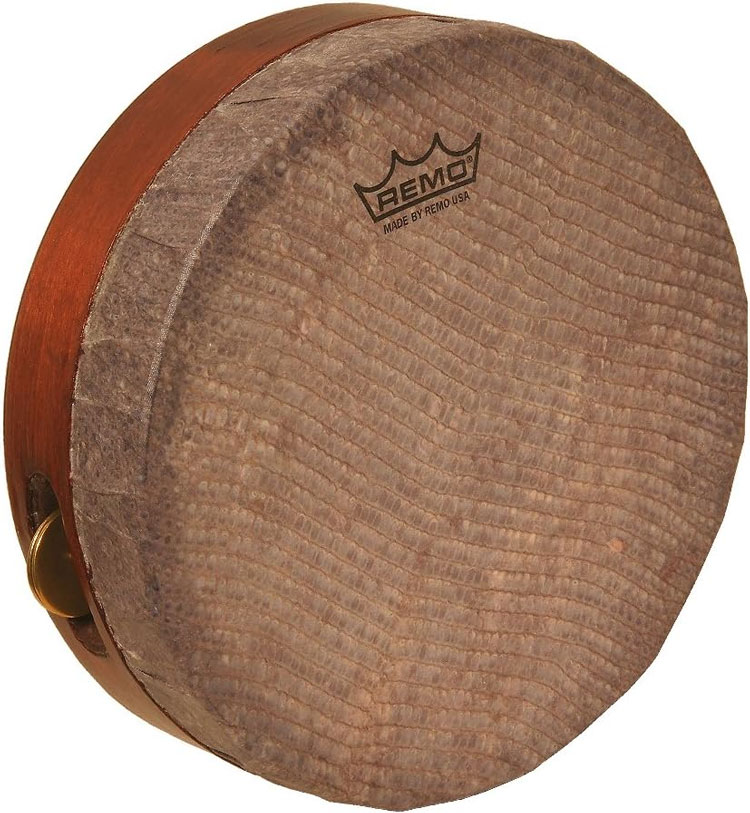The kanjira, also known as khanjira, khanjiri, or ganjira, is a small musical instrument from South India. It belongs to the tambourine family and is commonly used in folk music and bhajans (devotional songs).
In terms of construction and design, the kanjira is a relatively simple instrument. It consists of a circular wooden frame with a skin stretched and pasted on it. The skin used to be made from the hide of a lizard, but these reptiles are currently protected, so newer kanjiras are made with goat skin. The frame of the kanjira often has three or four slots on the side, where bell-metal jingle disks are suspended from metal crossbars. These jingle disks produce a characteristic sound when the instrument is played.
To play the kanjira, the musician holds the instrument at the bottom of the frame with the left hand, which also adjusts the tension of the skin. The instrument is played with the fingers of the right hand, which strike the skin to produce sounds. The pitch of the kanjira can be varied by wetting the skin, allowing the player to achieve different tones and pitches.
The kanjira is used in religious ceremonies as well as Indian classical music. It is typically used as an accompaniment to vocal and instrumental performances. In Carnatic music (classical music from South India), the kanjira plays a significant role in providing rhythmic support and enhancing the overall musical experience.
In connection with size, the kanjira is available in various sizes, with the most common size being around 15 centimers (6 inches) in diameter. It is also possible to find larger or smaller variations of the instrument. Some kanjiras are handmade using traditional methods, while others may be made using synthetic materials.
(headline image: kanjira made by Remo)


